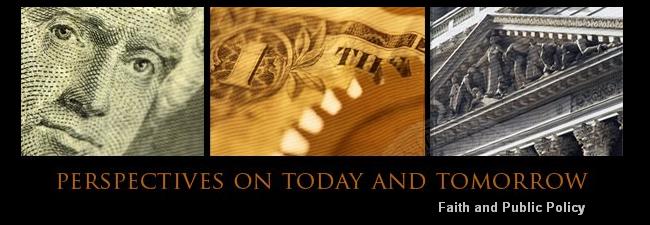“’It was the worst of times, and it was the worst of times.’
I imagine that's what Charles Dickens would conclude about the current condition of the U.S. economy, based on the relentless drumbeat of pessimism in the media and on the campaign trail. In the past two months, this newspaper alone [the Washington Post] has written no fewer than nine times ... that key elements of the economy are the worst they've been "since the Great Depression." ...
...
But that doesn't make any of it true. Things today just aren't that bad. Sure, there are trouble spots in the economy, as the government takeover of mortgage giants Fannie Mae and Freddie Mac, and jitters about Wall Street firm Lehman Brothers, amply demonstrate. And unemployment figures are up a bit, too. None of this, however, is cause for depression -- or exaggerated Depression comparisons.
Overall, the pessimists are up against an insurmountable reality: In the last reported quarter, the U.S. economy grew at an annual rate of 3.3 percent, adjusted for inflation. That's virtually the same as the 3.4 percent average growth rate since -- yes -- the Great Depression.
...
A housing "slump," a housing "crisis"? A "severe" price decline? According to the latest report from the National Association of Realtors, the median price of an existing home is up 8.5 percent from the low of last February. And according to the U.S. Census Bureau, the median price of a new home is up 1.3 percent from the low of last December. Home prices may not be at all-time highs -- and there are pockets of continuing decline in some urban areas -- but overall they've clearly stopped going down and have started to recover. ...
"Turmoil" in the debt markets? Sure, but we've seen plenty worse. According to the FDIC, there have been a total of 13 bank failures in 2007 and so far into 2008. There were 15 in 1999-2000, the climax of the Obama-celebrated era of Clintonian prosperity. And in recession-free 1988-89, there were 1,004 failures -- almost an order of magnitude more than today. Since the Great Depression, the average number of bank failures each year has been 94.
...
Financial market "crisis" and "meltdown"? Yes, from all-time highs last October, the S&P 500 has fallen 20 percent. But that's nothing by historical standards. Stocks have often fallen more than that over comparable spans of time. They fell more than twice that much in 1974 -- which was truly the worst drop since the Great Depression. ...
Some economic indicators -- export growth and non-defense capital goods orders such as industrial machinery, for example -- are running at levels associated with brisk expansion. ...
...
Whatever the political outcome this year, hopefully this will prove to be yet another instance of that iron law of economics and markets: The sentiment of the majority is always wrong at key turning points. And the majority is plenty pessimistic right now. That suggests that we're on the brink not of recession, but of accelerating prosperity.
Maybe this will turn out to be the best of times -- at least since the Great Depression.”
Donald Luskin, “Quit Doling Out That Bad-Economy Line”, Washington Post (14 September 2008)
http://www.washingtonpost.com/wp-dyn/content/article/2008/09/12/AR2008091202415.html
Donald L. Luskin is chief investment officer of Trend Macrolytics LLC, an economics consulting firm based in Menlo Park, Calif.
It is a fair point to make that the “real” economy where the actual production of the goods and services we enjoy every day takes place has held up rather well as the financial sector has experienced increasing turmoil. Industrial production, for example, has slipped a bit the past six months or so, especially in those branches related to construction and building, but the slowdown is modest compared with past experience and the most recent data do not point to a significant downturn. According to the Institute for Supply Management, as another example, the service sector, which includes real estate, construction, health care, finance, insurance and other activities, expanded in August, and the Commerce Department has reported that U.S. exports have been rising rapidly during the year. Recent measures of consumer price inflation have been very low if -- a big if -- one excludes energy and food prices, which have been increasing extremely rapidly but now appear to have moderated their rise somewhat. It is surprising how well the economy is performing in the midst of a continuing financial crisis.
One might add that it is not simply that the data on the economy do not indicate we are now in a recession. More importantly, they point out that the current economic situation must get much worse before the indicators used to define a recession reach the recession threshold. While anything can happen, the U.S. economy continues to prove its resiliency in the face of mounting financial troubles, and it is not beyond the possibility it will pass through this period of turmoil without experiencing a recession in the real economy.
It may be too much to say we are through the worst of our economic woes and are now entering a period “of accelerating prosperity”, as Luskin says. I suspect we will experience continuing problems and slow growth for the next year or two and the longer-term pace of real economic growth may well be lower than the past few decades. It will certainly take many years to restore stability to the banking system. Further adjustments will have to be made in response to our ageing population and they are likely to hamper any rapid expansion of the economy.
But I must say I am pleased the economy is doing as well as it appears to be doing. That is a pleasant surprise.



No comments:
Post a Comment